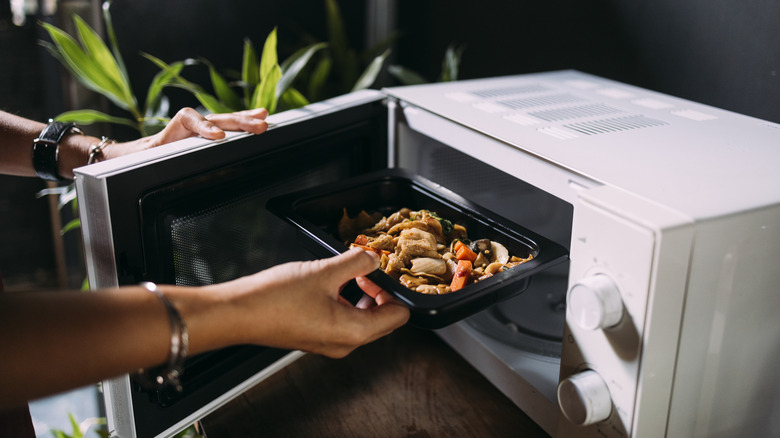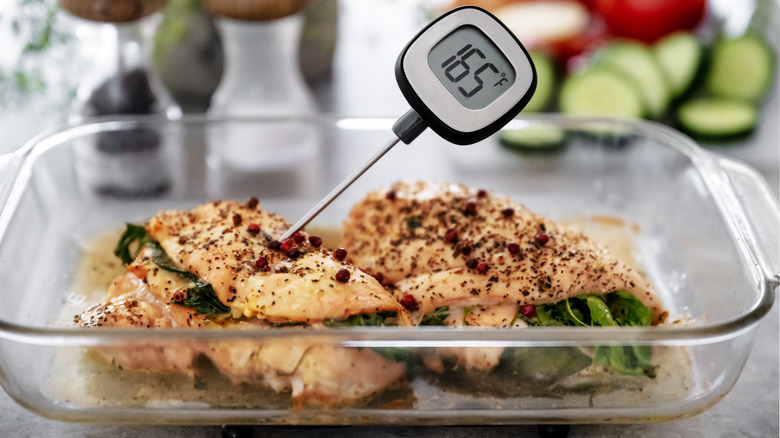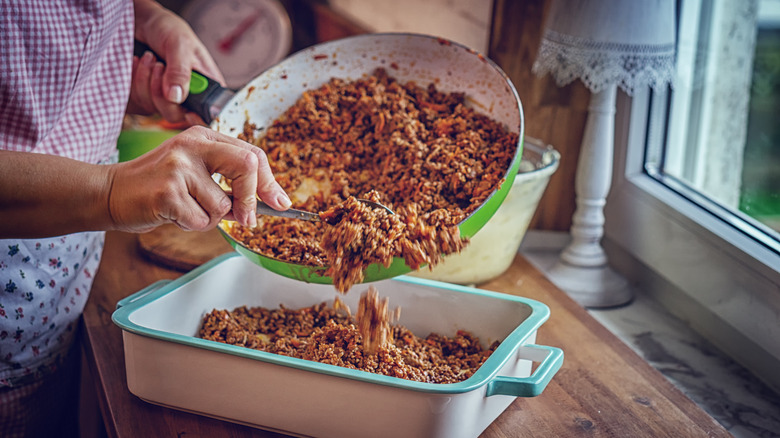The Rules To Follow For Safely Cooking Meat In The Microwave
Most people rely on their microwaves to whip up quick snacks like popcorn or heat up leftovers. However, these convenient appliances can also be used to cook meat, provided you take the right approach. According to the USDA, it's perfectly safe to use the microwave for cooking meat, but you must employ certain techniques to decrease the risk of foodborne illnesses.
One downside of microwave cooking is that food is heated unevenly inside the appliance. Uneven heating means that some areas of the meat will be cooler than others, which encourages the growth of dangerous bacteria in those portions. Rotating the meat as it cooks ensures that it's heated up uniformly, as this method ensures heat reaches all areas of the food as it's being cooked. You can also cover the dish, which prevents steam from escaping and makes for a more evenly cooked piece of meat.
Eliminating cold segments reduces the chance of food poisoning, while also making for a more palatable meal. Additionally, you'll also need to make sure that the meat has reached the proper internal temperature before consuming it.
Safe internal temperatures for different types of meat
No matter what or how you're cooking, a trusty food thermometer can be your best friend in the kitchen. A thermometer can help you determine the exact internal temperature of the meat you're cooking, which must reach the minimum safe temperatures as explained by the USDA.
When it comes to raw poultry, you must aim for an internal temperature of at least 165 degrees to reduce the risk of salmonella poisoning and other types of foodborne illness. As for other forms of raw meat, such as pork and beef, the internal temp must be 145 degrees or higher. When cooking ground meat in the microwave, the minimum internal temperature should be 160 degrees (unless it's ground chicken or poultry, in which case 165 degrees is the minimum temperature for food safety).
To get the most accurate reading possible, place the probe of the thermometer into the thickest section of the meat, while also avoiding sections containing bones and fat. You should also let the meat sit inside the microwave for a few minutes before gauging the temperature, as standing time is another crucial factor when it comes to food safety.
What is standing time and how does it affect safety?
Speaking with Yahoo Life, personal chef Josh Champion encourages home cooks to be aware of something called "standing time," which refers to the amount of time food, such as meat, should be left inside the microwave before being removed. The standing time for microwaves is two minutes. These two minutes of standing time ensures microwave-cooked food maintains the proper internal temperature, which is crucial to preventing the growth of bacteria that can contribute to foodborne illness. Standing time is about 15 seconds with more conventional cooking methods, but it's longer for microwaves because they face challenges cooking food uniformly throughout.
As explained by the FDA, microwaves excite water molecules within food, which in turn produces heat. This molecule activity continues after the microwave has been turned off to ensure that food reaches the correct internal temperature. In fact, food temperatures can increase by as much as 30 degrees while standing in the microwave. Obeying these tips can help you create a convenient and tasty meal that is perfectly safe for consumption.


